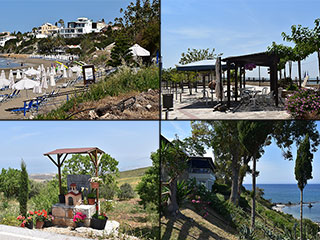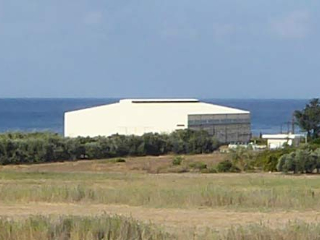The History of Paphos in 16 Pictures
When I was out photographing a new statue in Old Paphos the other week, I stumbled upon a walkway I hadn't seen before. It descended to the lower carpark, by the Turkish Baths. The walkway was adorned with pictures telling the story of Paphos through the ages. Judging by the state of some of the pictures they had obviously been there for some time, but this was the first I had seen of them. Here they are for your perusal...
The Walkway
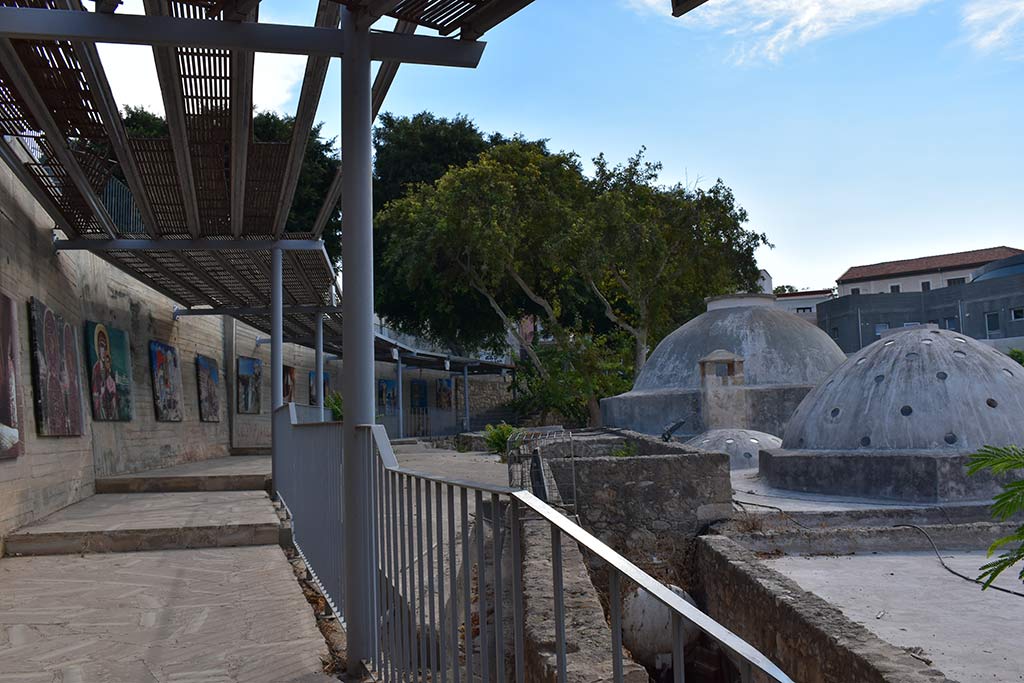
I have to admit, when I first found the walkway my heart sank a bit. I am in the process of producing a new website on Old Pafos. It includes a panoramic tour of the whole area. It doesn't however, include this walkway, which is a shame, as it is in the Old Town.

I will add it later, but if I keep adding stuff the site will never get published. The new site will go live next week, so I might be able to add it then. For now though, if you want to see the History of Paphos, then read on...
Paphos At The Dawn Of History
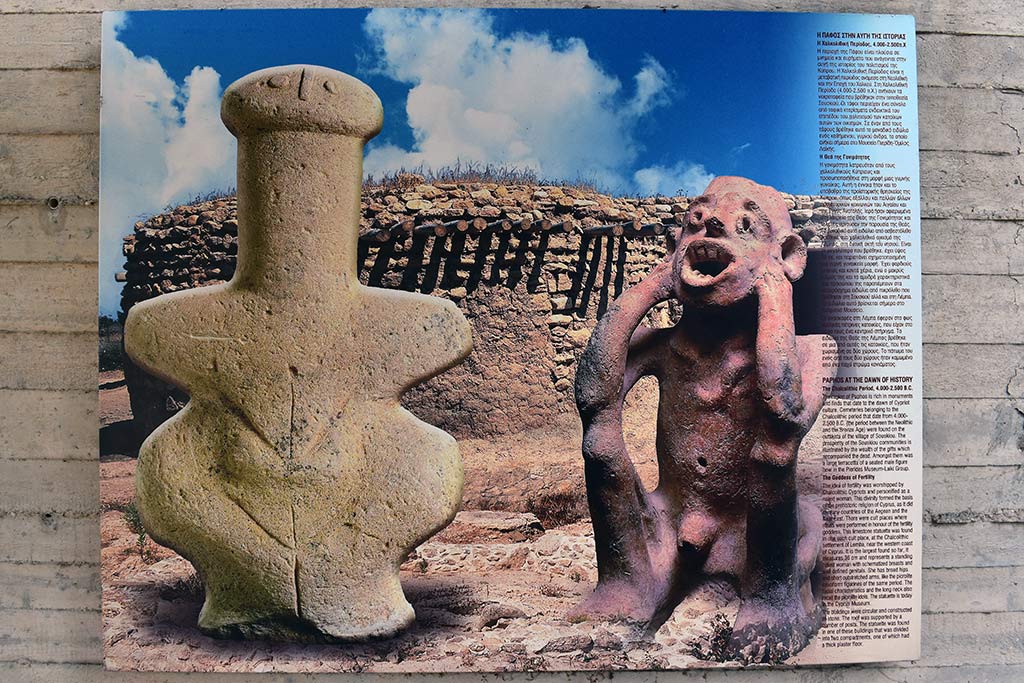
I am reproducing the text that accompanies the pictures as it is difficult to read in the pictures. When I make my own comments they will be in italics.
The Chalcolithic Period, 4000 - 2500 BC
The region of Paphos is rich in monuments and finds that date to the dawn of Cypriot culture. Cemeteries belonging to the Chalcolithic period that date from 3000 - 2500BC (the period between the Neolithic and the bronze Age) were found on the outskirts of the village of Souskiou. The prosperity of the Souskiou communities is illustrated by the wealth of the gifts which accompanied the dead. Amongst them was a large terracotta of a seated male figure now in the Pierides Museeum-Laiki Group.
The Goddess of Fertility
The idea of fertility was worshipped by Chalcolithic Cypriots and personified as a naked woman. This divinity formed the basis of the prehistoric religion of Cyprus, as it did in many countries of the Aegean and the Near East. There were cult places where rituals were performed in honour of the fertility goddess. This limestone statuette was found in one such cult place, at the Chalcolithic settlement of Lemba, near the western coast of Cyprus. It is the largest found so far, it measures 36 cm and represents a standing naked woman with schematized breasts and well defined genitals. She has broad hips and short outstretched arms, like the picrolite cruciform figurines of the same period. The facial characteristics and the long neck also recall the picrolite idols. the statuette is today in the Cypruis Museum.
The buildings were circular and constructed of stone. The roof was supported by a number of posts. The statuette was found in one of these buildings that was divided into two compartments, one of which had a thick plaster floor.
The Arrival of the Alchaeans
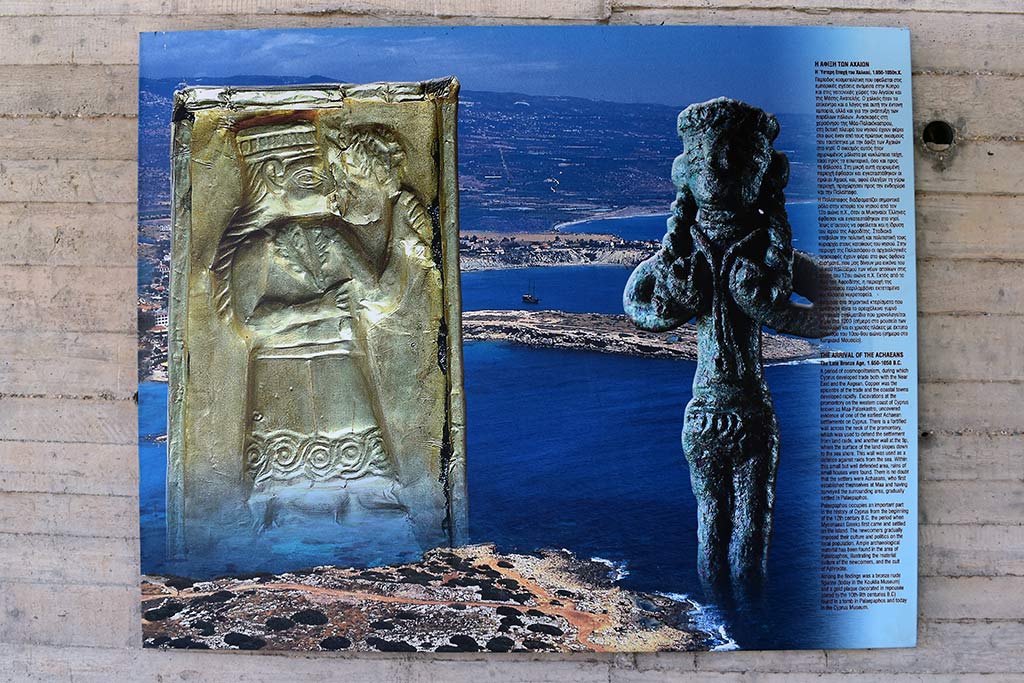
The Late Bronze Age, 1650 - 1050 BC
A period of cosmopolitanism, during which Cyprus developed trade both with the Near East and the Aegean. Copper was the epicentre of the trade and the coastal towns developed rapidly. Excavations at the promontory on the western coast of Cyprus known as Maa-Palaekastro, uncovered evidence of one of the earliest Achaean settlements on Cyprus. There is a fortified wall across the neck of the promontory, which was used to defend the settlement from land raids, and another wall at the tip, where the surface of the land slopes down to the sea shore. This wall was used as a defence against raids from the sea. Within this small but well defended area, ruins of small houses were found. There is no doubt that the settlers were Achaeans, who first established themselves at Maa and having surveyed the surrounding area, gradually settled in Palaepaphos.
Among the findings was a bronze nude figurine (today in the Kouklia Museum) and a gold plaque decorated in repousee (dated to the 10th - 9th centureies BC) found in a tomb in Palaepaphos and today in the Cyprus Museum.
The Cult of Aphrodite
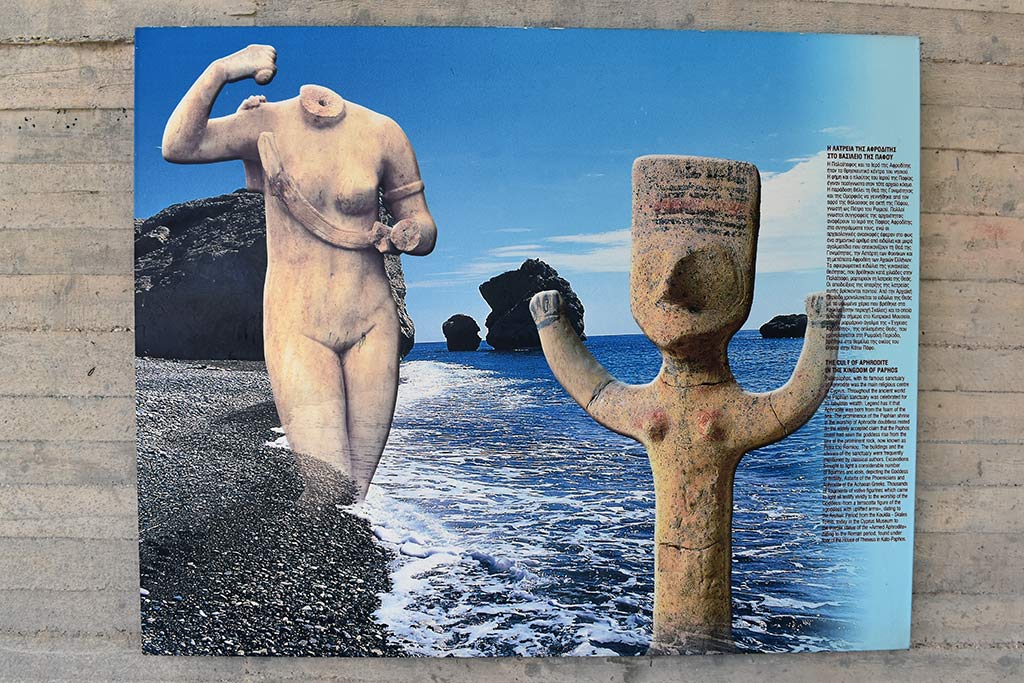
The Cult of Aphrodite in the Kingdom of Paphos
Palaepaphos, with its famous sanctuary of Aphrodite was a main religious centre of Cyprus. Throughout the ancient world the Paphian sanctuary was celebrated for its fabulous wealth. Legend has it that Aphrodite was born from the foam of the sea. The prominence of the Paphian shrine in the worship of Aphrodite doubtless rested on the widely accepted claim that the Paphos cost had seen the goddess rise from the sea at the prominent rock, now known as Petra tou Romiou. The buildings and the shrines of the sanctuary were frequently mentioned by classical authors. Excavations brought to light a considerable number of figurines and idols, depicting the Goddess of fertility, Astarte of the Phoenicians and Aphrodite of the Achaean Greeks. Thousands of fragments of votive figurines which came to light all testify vividly to the worship of the Goddess: from a terracotta figure of the "goddess with uplifted arms", dating to the Archaic Period from the Kouklia - Skales Tomb, today in the Cyprus Museum to the marble statue of the "Armed Aphrodite" dating to the Roman period, found under the floor of the House of Theseus in Kato-Paphos.
Page 1 of 4

Related Blogs:
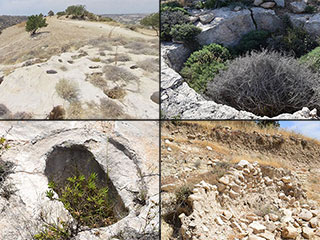
Souskiou Cemetery
Last spring we blogged about our visit to the abandoned village of Souskiou in the Diarizos Valley. We received numerous comments, some of which alluded to an ancient cemetery that lurked in the nearby hills. Well, this naturally piqued our curiosity, and we resolved to track them down. Over the next few months we made numerous excursions, and this is a summary of what we found...
Ancient Lemba
Yesterday a news headline caught my eye: "An ancient Chalcolithic settlement site in Lemba in Paphos urgently requires maintenance, according to the local community leader". We had visited this site before, so I thought I should revisit it to see just how urgent the maintenance was...
The Ancient Sugar Factory At Kouklia
As you drive along the A6 from Paphos to Limassol, you will pass the Asprokemmos Dam on your left. Just after that you will see some old ruins. This is the site of an ancient sugar factory.
Sinti Monastery
It's time for another guest blog, and this time Max has taken a break from his minerals to show us somewhere a bit more spiritual. Over to you Max... Sinti Monastery is a very important ancient monument and not far away from Paphos, in the beautiful Xeros River Valley. I thought I would take a round trip. In order that people can visit the place all year round (even after a good Winter's rain) in a normal car I took the longer route over the hills where the roads nowadays are all properly surfaced. On the way back you can either take the same road (Winter) or use the short cut along the Xeros river bed which is only 8 km until the next village Nata.Good Pages To Visit
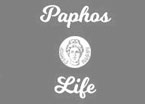
FB PagePaphos Life on Facebook
Like us on Facebook and stay notified of new blog posts.

FB PageOur Facebook Chat Group
Paphos Chat has been created for people who like our site and want to chat using Facebook. You can also easily upload photos of any size here. A lot of people are members of the Facebook chat group and the main forum. It's entirely up to you.
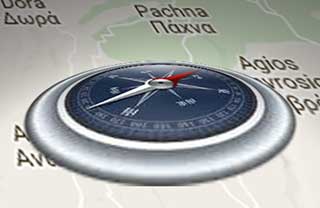
ListBlog Locations
Planning a day out? Then use our map of blog locations as a handy guide. Some of the places we visit our closer to each other than you might think, so take a look and start planning your next adventure...
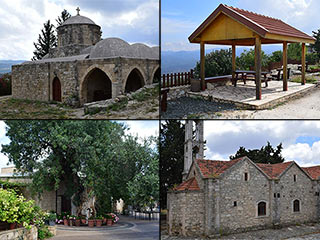
eBookCyprus Road Trip 01: the Kathikas - Panagia Loop
Let me take you on a journey around the region of Paphos, Cyprus. Starting at Paphos itself, we travel to Akoursos, then Kathikas, Kritou Terra and Simou. We continue past Lasa and Kannaviou, before taking in the delights of Panagia. Getting a bit more adventurous, we visit the abandoned villages of Statos and Agios Fotios, before passing through Choulou, Letymbou and Polemi, and rejoining the main Paphos - Polis road.
The route is suitable for all types of vehicle, and requires no off-roading. The guide contains about 130 photographs including shots of all the road signs you need to pay attention to, as well as some of the highlights you may experience along the way.
There are also several maps which will help you keep your bearings.
You can do this journey in a day, or you can break it up into chunks. You can also do it in reverse, to get some completely different views. It is entirely up to you.
